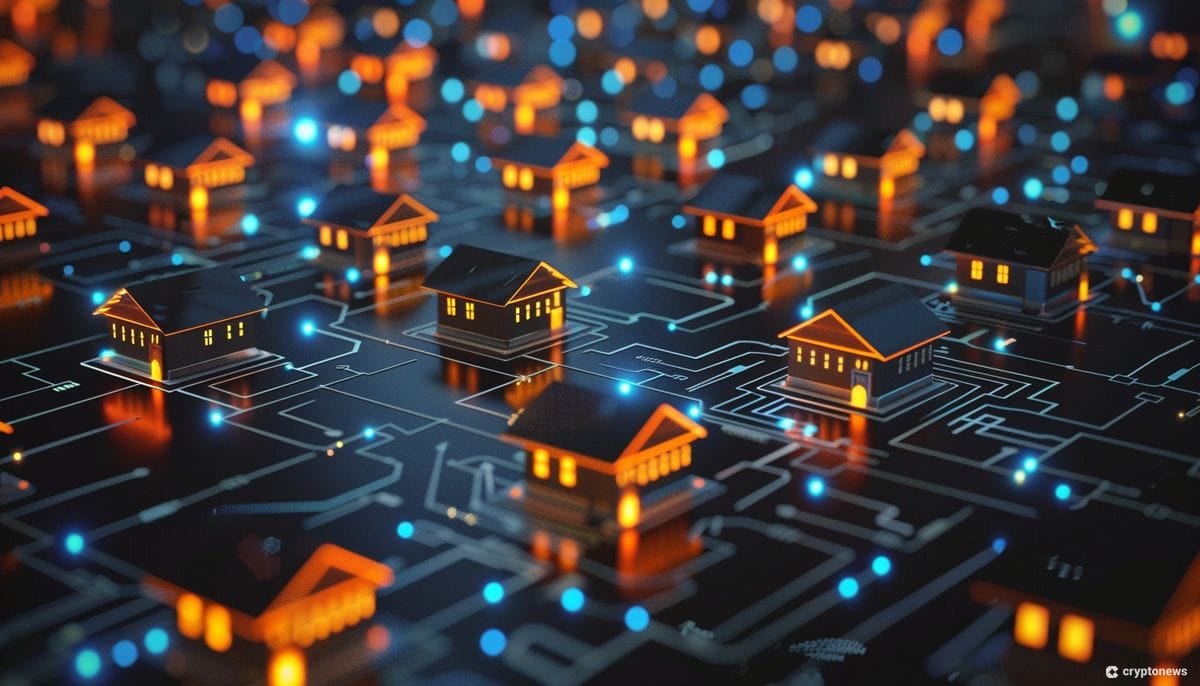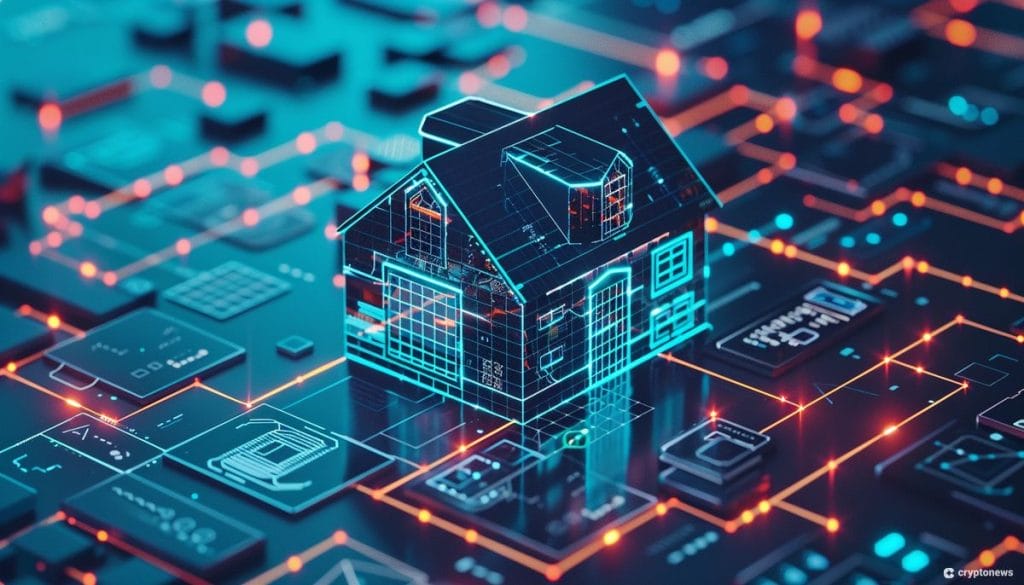First Real-Life Assets to Be Tokenized Revealed

The concept of real-world asset (RWA) tokenization has been gaining significant traction, with an increasing number of projects experimenting with tokenized assets.
At its core, RWA tokenization is the process of representing physical and traditional financial assets as digital tokens on a blockchain.
These tokenized assets, which can be bought, sold, and traded just like securities, offer numerous advantages, including increased liquidity, faster settlement, lower costs, and bolstered risk management.
According to analysts at McKinsey & Company, the market for tokenized assets is projected to reach an astonishing $2 trillion by 2030.
In a recent report, the analysts noted that while the adoption of tokenization has had a slow start, they anticipate significant growth in the coming years.
They even suggest a bullish scenario where the market value could double to around $4 trillion, although they remain slightly less optimistic than before.
McKinsey’s analysts identified several asset classes that are likely to experience meaningful adoption first, including cash and deposits, bonds and exchange-traded notes (ETNs), mutual funds, exchange-traded funds (ETFs), loans, and securitization.
What is RWA Tokenization?
RWA tokenization involves converting rights to a physical or intangible asset into a digital token on a blockchain.
This approach allows traditional assets like real estate, commodities, and financial securities to be represented, owned, and traded digitally.
The primary benefits of RWA tokenization include increased liquidity, reduced transaction costs, and enhanced accessibility.
By tokenizing assets, it becomes possible to trade fractions of high-value items, making them more accessible to a broader range of investors.
Additionally, the use of smart contracts automates and streamlines transaction processes, reducing reliance on intermediaries and lowering associated costs.
It is worth noting that interest in asset tokenization has increased substantially in recent years, fueled by several factors.
For one, technological advancements in blockchain and smart contracts have made the tokenization process more accessible and secure.
Furthermore, regulatory developments are gradually creating a more favorable environment for digital assets, attracting institutional investors and traditional financial markets.
Benefits of Tokenization
- Increased Liquidity: Tokenization allows assets to be divided into smaller, tradable units, enhancing liquidity. This is particularly beneficial for assets that are traditionally illiquid, such as real estate and fine art.
- Fractional Ownership: Investors can purchase fractions of high-value assets, democratizing access to investment opportunities that were previously out of reach.
- Broader Market Access: Tokenization opens up global markets, enabling anyone with internet access to invest in a diverse range of assets.
Early Candidates for Tokenization
Early candidates for tokenization typically include assets that can benefit significantly from increased liquidity, transparency, and efficiency offered by blockchain technology. Some of the most promising early candidates for tokenization are:
1. Real Estate

Real estate has emerged as a prime candidate for tokenization due to its substantial value and the inherent liquidity challenges associated with property investment.
Projects like RealT and Tangible are pioneering the tokenization of real estate, allowing investors to buy fractions of properties.
This approach not only democratizes access to property investment but also enhances liquidity in the real estate market by making it easier to trade property shares.
2. Art and Collectibles
The tokenization of art and collectibles, illustrated by the rise of non-fungible tokens (NFTs), is transforming how high-value items are bought and sold.
Companies like Freeport have successfully fractionalized iconic artworks, enabling investors to own shares of masterpieces like Andy Warhol’s paintings.
This trend is expanding to include rare collectibles, luxury items, and even digital art, providing a secure and transparent way to invest in valuable assets.
3. Commodities
Tokenizing commodities such as gold, oil, and agricultural products could revolutionize commodity trading.
By converting these physical assets into digital tokens, the process of trading becomes more efficient and accessible.
This could lead to a more liquid and transparent commodities market, attracting a broader range of investors.
4. Financial Instruments
The financial sector is also exploring the tokenization of bonds, securities, and other instruments.
Tokenized financial assets can enhance market transparency and accessibility, allowing for more efficient trading and settlement processes.
Platforms like Polymesh are at the forefront of this innovation, providing the infrastructure needed to securely tokenize and manage securities.
5. Intellectual Property
Tokenizing intellectual property rights, such as patents and trademarks, is an emerging trend that could simplify licensing and revenue sharing.
This can provide a more efficient and transparent method for managing and monetizing intellectual property, benefiting creators and investors alike.
Institutional Interest in Tokenization Soars
One major driver behind the growth of asset tokenization is the increasing interest from institutional investors and financial markets.
In March, investment management firm BlackRock launched a new tokenized fund in collaboration with digital asset securities firm Securitize.
The fund, registered in the British Virgin Islands, operates as a pooled investment fund. This structure allows investors to pool their funds together into a single portfolio, providing them with potentially higher returns.
As reported, leading financial institutions on Wall Street are shifting their focus towards industrializing proofs-of-concept (PoCs) developed within the blockchain experiment known as Project Guardian.
JPMorgan’s blockchain platform, Onyx, is particularly keen on converting the insights gained from its pilot program with the Monetary Authority of Singapore (MAS) into tangible products.
Another traditional firm heavily invested in blockchain-enabled finance migration is WisdomTree, an asset manager.
WisdomTree is also exploring the provision of different on-chain services through a unified interface for its clients.
The company aims to integrate various financial services, including tokenized portfolios and traditional banking services, into a single application.
It is worth noting that both public and private blockchains are witnessing the inclusion of various assets.
Some of the more notable examples include Franklin Templeton’s U.S. Government Money Fund expanding from Stellar to Polygon, Backed Finance launching a tokenized short-term U.S. treasury bond exchange-traded fund (ETF), and UBS Asset Management deploying a tokenized money market fund (MMF) on the Ethereum blockchain.
Challenges to Widespread Adoption
Despite the promising potential of asset tokenization, several challenges need to be addressed to achieve widespread adoption.
A significant obstacle is regulatory uncertainty. Many jurisdictions lack clear and consistent legal frameworks for tokenized assets, making it difficult to comply with varying laws across borders.
Furthermore, as noted by analysts at McKinsey & Company, limited liquidity and concerns about losing market share often discourage tokenized issuances, leading to parallel issuances on legacy systems.
To overcome these challenges, tokenization needs compelling use cases that offer clear advantages over traditional finance systems.
The analysts further added that modernizing existing financial infrastructure poses a challenge, particularly in heavily regulated industries like financial services.
To foster greater adoption, McKinsey’s analysts highlighted the importance of providing increased mobility, faster settlement, and enhanced liquidity for tokenized assets.
The Bottom Line
In conclusion, asset tokenization represents a revolutionary shift in how assets are owned, traded, and managed.
Various sectors, including real estate, art, commodities, and financial instruments, stand to benefit immensely from this technological transformation.
However, widespread adoption of tokenization is still a distant reality, with challenges like regulatory uncertainty, limited liquidity, and market readiness remaining.









